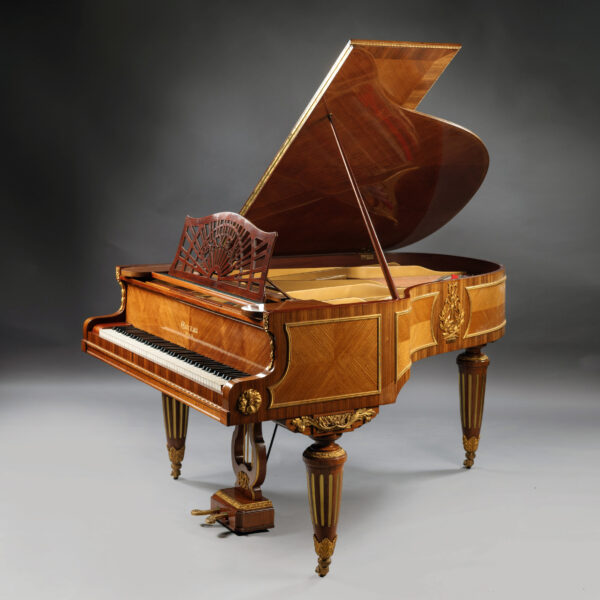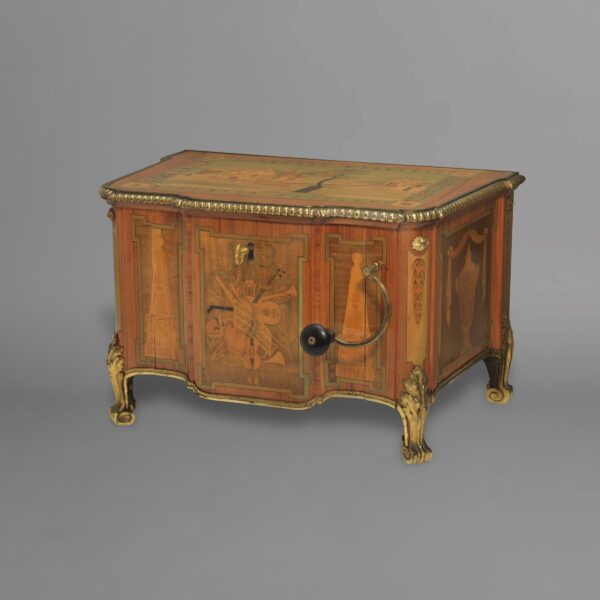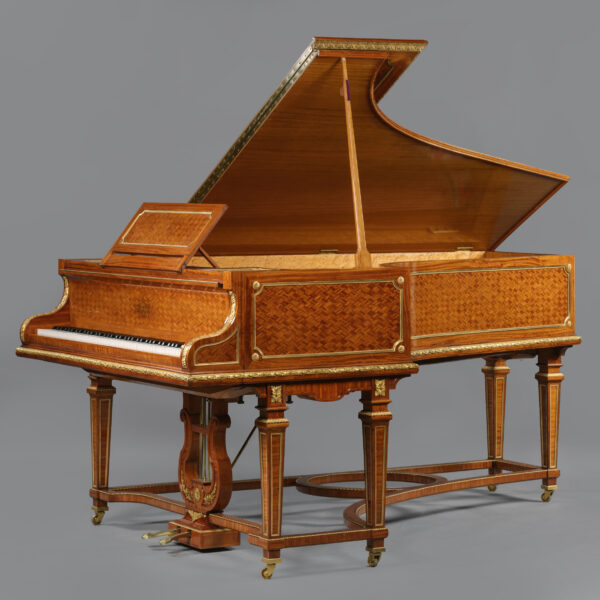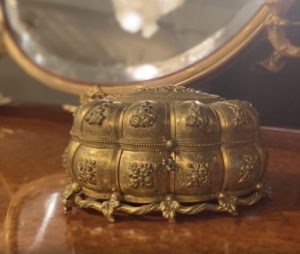Andrea Brustolon
Un taburete de madera tallada para piano
£15,000
A Fine Carved and Giltwood Piano Stool in the Manner of Andrea Brustolon. A Fine Carved and Giltwood Piano Stool, in the Manner of Andrea Brustolon...
Dimensiones
Height: 71 cm (28 in)Width: 73 cm (29 in)
Profundidad: 62 cm (25 in)
Descripción
A Fine Carved and Giltwood Piano Stool in the Manner of Andrea Brustolon.
A Fine Carved and Giltwood Piano Stool, in the Manner of Andrea Brustolon carved with four expressive cherubs resting on scrolled volutes which extend above the upholstered seat. The apron is carved with acanthus and scrolls framing diapered panels and raised on four scroll legs.
Andrea Brustolon (b. 1662 – d. 1732) was a Venetian sculptor and carver known for his exuberant Baroque style furniture and devotional sculptures. He trained in the local tradition at Belluno in the Venetian terraferma and in the studio of the Genoese sculptor Filippo Parodi who carried out commissions at Padua and Venice. His high Baroque style was undoubtedly influenced by two years spent in Rome from 1678 – 1680 where he was exposed to the sculpture of Bernini and his contemporaries.
The first phase of his working career was spent in Venice, 1680-1685. His furniture including armchairs with figural sculptures that take the place of front legs and armrest supports were inspired by his experience of Bernini’s Cathedra Petri.
His style inspired many imitators, both contemporary, and later. The Venetian sculptor Valentino Panciera Besarel (1829-1902) made upholstered armchairs in the Brustolon manner from the 1860s, and this elegant and playful stool may be by his hand.
Italian, Circa 1860.
Fecha
Alrededor de 1860
Origen
Italy
Medio
Tallado de madera dorada
Andrea Brustolon (b. 1662 – d. 1732) was a Venetian sculptor and carver known for his exuberant Baroque style furniture and devotional sculptures. He trained in the local tradition at Belluno in the Venetian terraferma and in the studio of the Genoese sculptor Filippo Parodi who carried out commissions at Padua and Venice. His high Baroque style was undoubtedly influenced by two years spent in Rome from 1678 – 1680 where he was exposed to the sculpture of Bernini and his contemporaries.
The first phase of his working career was spent in Venice, 1680-1685. His furniture including armchairs with figural sculptures that take the place of front legs and armrest supports were inspired by his experience of Bernini’s Cathedra Petri.
Bibliography:
Biasuz G & Buttignon M.G. Andrea Brustolon, (Instituto Veneto Arti Grafiche), 1969.
Biasuz G, & Buttignon M.G. Andrea Brustolon, (Instituto Veneto Arti Grafiche), 1969.
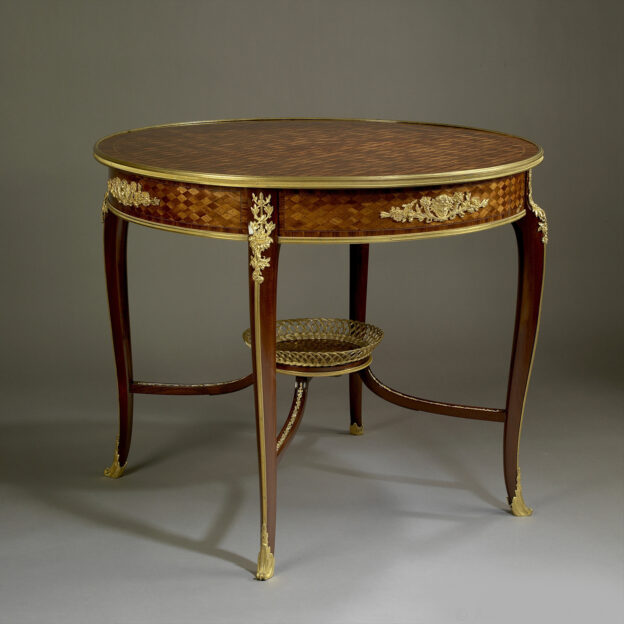




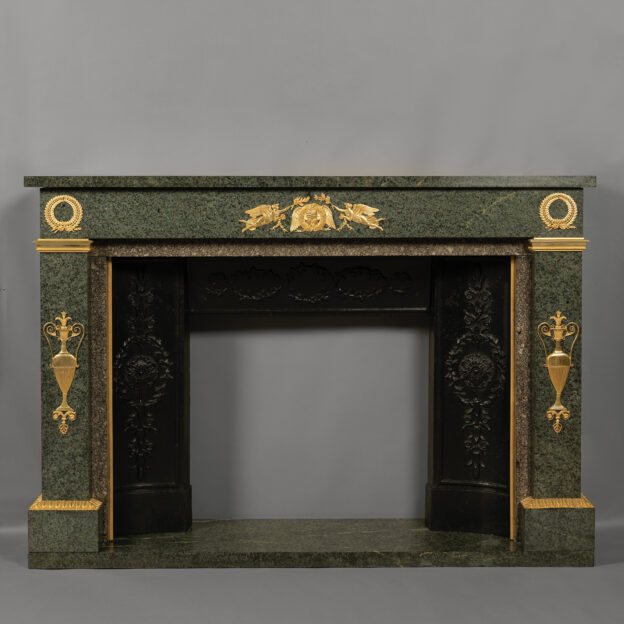


 Imprimir
Imprimir